University of North Carolina at Greensboro
The University of North Carolina at Greensboro (UNCG or UNC Greensboro) is a public research university in Greensboro, North Carolina. It is part of the University of North Carolina system. It is accredited by the Southern Association of Colleges and Schools Commission on Colleges to award baccalaureate, masters, specialist, and doctoral degrees.
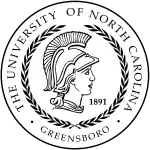 | |
Former names | State Normal and Industrial School (1891–96) State Normal and Industrial College (1896–1919) North Carolina College for Women (1919–32) Woman's College of the University of North Carolina (1932–63) |
|---|---|
| Motto | Service |
| Type | Public research university |
| Established | 1891 |
Parent institution | UNC System |
Academic affiliations | CUMU |
| Endowment | $368.6 million (2022) [1] |
| Chancellor | Franklin D. Gilliam, Jr.[2] |
| Provost | Debbie Storrs[3] |
Academic staff | 1,145 (859 full-time and 286 part-time) (2019 fall)[4] |
| Students | 19,764 (2020 fall)[5] |
| Undergraduates | 15,995 (2020 fall)[5] |
| Postgraduates | 3,769 (2020 fall)[5] |
| Location | , U.S. |
| Campus | Urban, ~250 acres (100 ha)[5] |
| Colors | Gold, white, navy blue[6] |
| Nickname | Spartans |
Sporting affiliations | NCAA Division I – SoCon |
| Mascot | "Spiro" the Spartan |
| Website | www |
 | |
The university offers over 100 undergraduate, 61 master's, and 26 doctoral programs.[7] The university's academic schools and programs include the College of Arts & Sciences, the Joseph M. Bryan School of Business & Economics, the School of Education, the School of Health and Human Sciences, the Joint School of Nanoscience & Nanoengineering (one of the nation's first such schools), the School of Visual and Performing Arts, the School of Nursing, Continual Learning, Graduate School, Warren Ashby Residential College and Lloyd International Honors College. UNCG is also home to the Weatherspoon Art Museum, which features one of the country's largest collections of modern American art.
History
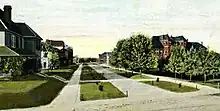
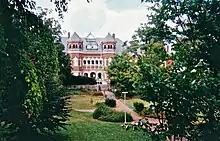
The university was established as a woman's college in 1891 by legislative enactment and opened in 1892. Credit for the establishing to UNCG is given to Charles Duncan McIver. McIver served as the institution's first chief executive officer with the title of president. This position was also known as dean of administration after 1934 and chancellor since 1945.
The school provided business, domestic science, and teaching instruction, with a student body of 223 and a faculty of 15 in its first year. R. S. Pullen and R. T. Gray donated the original 10-acre (4.0 ha) site in Greensboro, where the first building was erected, with state funds totaling $30,000.
It is North Carolina's first and only public university founded to educate women. In 1949, it became the nation's largest all-female institution.[8]
The school has seen many names over the years, changing from the State Normal and Industrial School to the State Normal and Industrial College in 1896, and again in 1919 to North Carolina College for Women. In 1932, it changed to the Woman's College of the University of North Carolina, when it became one of the three charter institutions of the Consolidated University of North Carolina; it changed again to the University of North Carolina at Greensboro when men were first admitted to the school in 1963.
Recognition and rankings
| Academic rankings | |
|---|---|
| National | |
| ARWU[9] | 191–206 |
| Forbes[10] | 559 |
| THE / WSJ[11] | 501–600 |
| U.S. News & World Report[12] | 258 |
| Washington Monthly[13] | 96 |
| Global | |
| ARWU[14] | 901–1000 |
| THE[15] | 601–800 |
| U.S. News & World Report[16] | 1038 |
In its 2021 rankings, U.S. News & World Report ranked UNC Greensboro tied for 258th out of 389 national universities, tied for 126th in its ranking of 209 "Top Public Schools", and 23rd out of 389 universities in "Top Performers on Social Mobility".[17]
In its 2019–2020 rankings, Money magazine ranked UNC Greensboro 509th for "best value" out of 744 universities in the U.S.[18]
In 2020, Washington Monthly ranked UNC Greensboro 96th out of 389 schools on its National Universities list. Washington Monthly assesses the quality of schools based on social mobility, research, and promoting public service.[19]
In 2019, Forbes magazine's "America's Top Colleges" list ranked UNC Greensboro 559th out of 650 universities, liberal arts colleges, and service academies nationwide; 202nd among public universities, and 128th among schools in the South.[20]
Campus
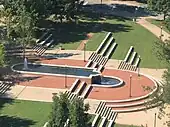
UNCG has an architecturally diverse campus with distinctive landmarks.[21] Historic structures include the Julius I. Foust Building (1891), Spencer Hall (1904, 1907), the Quad (1919–1923), the Chancellor's Residence (1923), the former Aycock Auditorium (1927), renamed UNCG Auditorium (2016),[22] and Alumni House (1937).[23] Other features include a statue of Minerva, to the east of Elliott University Center. Minerva has been a part of campus from the first diploma bearing her likeness in 1894 to the statue erected near the center in 2003. Minerva also inspired the university's new graphic identity program, which was launched in 2004.
Other landmarks include "Charlie," a statue of the university's founder, Charles Duncan McIver, outside Jackson Library. The white tower stacks of the Jackson Library and the Spartan water tower are recognizable structures in the Greensboro community, and the campus is also home to "the Rawk" and the clock tower—two campus landmarks. The Fountain is another landmark on UNCG's campus and a common meeting place for student groups.
The new Nursing Building was completed and opened in January 2021.[24]
Athletics
The intercollegiate athletics program at The University of North Carolina at Greensboro reaches as far back as the late 1940s. During the 1980s, all Spartan teams competed in Division III (non-scholarship) and then Division II (scholarship) of the National Collegiate Athletic Association, and all teams have competed in Division 1 since Fall 1991. Between 1982 and 1987 the Men's Soccer team won the NCAA Division III national championship title every year except for 1984. Today UNCG competes in the Southern Conference, which is made up of 10 schools across five states in the Southeast.
The 18 athletic teams at UNCG include: Football, Baseball, Men's Basketball, Women's Basketball, Men's Cross Country, Women's Cross Country, Men's Golf, Women's Golf, Men's Soccer, Women's Soccer, Softball, Men's Indoor Track, Women's Indoor Track, Men's Tennis, Women's Tennis, Men's Track, Women's Track, Women's Volleyball.[25] Wrestling was dropped in 2011. Although not considered official sports teams, the Athletic Department also includes the UNCG Cheerleading Squad and the UNCG Dance Team, the Spartan Gs.
UNCG's men's basketball team moved into a "new" home in 2009–10, making the Greensboro Coliseum their home court. The move was announced by UNCG chancellor Dr. Linda Brady on December 5, 2008. As a preview of things to come, UNCG hosted Davidson in its new venue two months later and drew a crowd of 11,687. On December 29, 2010, a UNCG record attendance of 22,178 watched the Spartans host the Duke Blue Devils. At full capacity, the building holds more than 23,000 fans for basketball giving UNCG the ability to have potentially one of the largest basketball arenas in the country. UNCG utilizes a variety of configurations for its contests with a minimum capacity of 7,617. As part of the move, the Coliseum remodeled a floor into a Spartan "home floor" and completely renovated a massive locker room space for the team, complete with training room, meeting facilities, coaches offices and a players' lounge. The team is coached by former University of North Carolina at Chapel Hill player Wes Miller, who at the time of his appointment in 2012 was the youngest head coach in Division I.
Former UNCG women's basketball coach Lynne Agee, who retired following the 2010–11 season, ranks among the most successful coaches in intercollegiate women's basketball history. She is one of just 45 coaches in the history of the women's game to have engineered more than 600 victories. Under Agee's guidance, UNCG reached the 20-win plateau 16 times. The Spartans also earned berths into the Division I national tournament once, the Division II tournament once and the Division III tournament seven times. With Agee at the helm, UNCG became one of only 10 teams nationally (all divisions) to reach the NCAA tournament each of the first seven years it was held (1982–88). With UNCG's 1998 NCAA appearance, Agee became the first women's coach in history to take teams to the NCAA tournament in all three divisions.[26] UNCG is now coached by Roxboro, Person County native and former WNBA player Wendy Palmer.
The Blue Crew
The Blue Crew is a student organization dedicated to cheering on the Spartans at athletic events.
 The Blue Crew at a soccer game.
The Blue Crew at a soccer game. The Blue Crew at a basketball game.
The Blue Crew at a basketball game. Blue Crew at a basketball game.
Blue Crew at a basketball game. Blue Crew
Blue Crew
Clubs and traditions
UNCG is home to a large number of diverse and active sports and student organizations from Greek life to a radio station, and some traditions unique to the school.
Clubs
In 2010, clubs and organizations affiliated with UNCG included 36 honor societies and 20 fraternities and sororities. UNCG also has an active student government association, founded in 1910,[27] Campus Activities Board (CAB), and several foreign culture groups, a Neo-Black Society, PRIDE! (An LGBT support and acceptance group.), Queer Student Collective, The Science Fiction Fantasy Federation, and various performing arts, religious and service programs. Student media groups also produce UNCG's newspaper The Carolinian, CORADDI fine arts magazine, and the campus radio station, WUAG. UNCG has numerous political organizations, including the College Republicans, College Democrats, College Libertarians,[28][29] and the International Socialist Organization, and other activist groups, including STAND, an organization focused on the situation in the Darfur region of Sudan.
Club sports
All clubs are recognized student organizations through the UNCG's Office of Campus Activities & Programs.
This is a list of clubs that are members of the Club Sports Council:[30]
- Basketball (Women's)
- Bass Fishing
- Equestrian
- Esports
- Fencing
- Football
- Lacrosse (Men's)
- Lacrosse (Women's)
- Quidditch
- Rugby (Men's)
- Rugby (Women's)
- Running
- Soccer (Men's)
- Soccer (Women's)
- Softball
- Swimming
- Tennis
- Ultimate Frisbee (Women's)
- Volleyball
The Rawk
The Rawk[31] is a large boulder donated by members of Alpha Phi Omega in 1973 and painted nearly every day by students, who use it as a giant message board. Unofficial rules govern the use of the Rawk, and students know not to use foul language and that messages must be left for at least 24 hours before being painted over. Students know when they can begin to paint over previous messages on The Rawk by the two smaller rocks in front of it; one for the date, and one for the time at which the message was painted.
Clock towers
UNCG students also uphold the tradition of not walking beneath the four-faced clock tower near the Rawk. It is said that those who walk under the clock will not graduate on time, and some students believe this almost religiously, avoiding the bricks around the clock tower as well.[32]
A new clock and bell tower, the Nicholas A. Vacc Bell Tower, was constructed in 2005 on the site of the old University Bell, at the corner of College Avenue and Spring Garden Street. The bells ring on the hour and on every quarter of the hour in a sequence made famous by the Big Ben chimes.
University libraries
The UNCG University Libraries system has two branches. They are:
- the Walter Clinton Jackson Library (the main campus library); this includes the Martha Blakeney Hodges Special Collections and University Archives
- the Harold Schiffman Music Library
Other affiliated libraries on campus include:
- the Michel Family Teaching Resources Center and the SELF Design Studio (housed in the School of Education)
- the Intercultural Resource Center Library (located in the Elliot University Center)
Academic units
UNCG is home to research institutes and centers including the Gateway University Research Park, Center for Applied Research, Center for Creative Writing in the Arts, Center for Drug Discovery, Institute for Community and Economic Engagement, Center for Biotechnology, Genomics & Health Research, Music Research Institute and the Southeastern Regional Vision for Education (SERVE).
The university is organized into one traditional college, one specialty college, one professional college, and seven professional schools:
- College of Arts and Sciences
- College of Visual and Performing Arts
- Lloyd International Honors College
- Joseph M. Bryan School of Business and Economics
- School of Education
- School of Health and Human Sciences
- School of Nursing
- Joint School of Nanoscience and Nanoengineering
- The Graduate School
College of Arts and Sciences
The College of Arts and Sciences is the largest of the eight academic units that make up the university, with almost 500 full-time faculty in 21 academic departments and seven interdepartmental programs, spanning the arts, humanities, social sciences, natural sciences, and mathematics. John Z. Kiss was appointed Dean on July 1, 2016.[33]
UNCG requires all students, no matter what their major, to complete a General Education Curriculum (GEC) that includes courses in the traditional liberal arts, as well as courses that introduce them to new perspectives that have become increasingly important today. The college offers most of the university's general education courses, in addition to the hundreds of more specialized courses that make up its undergraduate majors and graduate programs.
English Department
The English Department, established in 1893, offers a Bachelor of Arts, Master of Arts, PhD, and multiple minors.[34] The writing program was, and continues to be, one of the most popular and successful parts of department. A writing center was established in 1985 aimed at students in the College of Arts and Sciences.[35][36] Today, the university Writing Center caters to all students and faculty and is housed under the Division of Student Success along with a Speaking Center, Digital ACT Studio, and Academic Achievement Center.[37][38] The department is ranked #7 in 2021 in NC for the English BA.[39] The PhD program has been recognized on U.S. News & World Report's 2022 Best Graduate School Rankings as the #3 PhD in English program in NC and #99 overall.[40]
The English Department is housed in the Moore Humanities and Research Administration Building, but was previously housed in the now demolished McIver Building, which was called "the ugliest classroom building in America."[41]
Notable Alumni & Faculty
In May 2017, alum Adam Tarleton gave the commencement address.[42] For a brief period in 1973, Nobel prize winner Louise Gluck held a position as a visiting poet.[43][44]
Notable Emeritus Faculty include: Fred Chappell and Craig Nova.
Lloyd International Honors College
The Lloyd International Honors College is a selective honors college at UNCG and provides undergraduate students in all majors an opportunity to reach a higher level of academic achievement in the same time it takes to earn a regular degree.
The college offers three Honors academic programs that allows students to enhance their general-education studies (International Honors Program), work in their major (Disciplinary Honors Program), or their entire undergraduate education while at UNCG (Full Honors Program). All Honors students take special Honors courses that are generally restricted to no more than 20–25 students and often have an interdisciplinary focus. For those who wish to complete International Honors or Full University Honors, an international experience and a second language are required.
Joseph M. Bryan School of Business and Economics
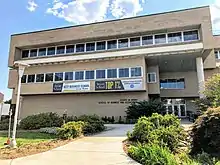
The Bryan School of Business and Economics is the largest of UNCG's seven professional schools. It was founded in 1969, and is named for Joseph M. Bryan, a prominent figure in North Carolina business and philanthropy. The Bryan School is among the top 1 percent of business schools worldwide that have achieved accreditation in both business and accounting by The Association to Advance Collegiate Schools of Business.[45] The Bryan School has 73 full-time faculty, 3,200 undergraduates, and 460 graduate students.[46] There are also more than 20,000 alumni.
McRae C. "Mac" Banks II is the fourth dean of the Bryan School. The first to hold the Virginia Batte Phillips professorship, Banks started his tenure as dean on July 1, 2011.[47]
Academic departments
- Accounting and Finance
- Consumer, Apparel, and Retail Studies
- Economics
- Information Systems and Supply Chain Management
- Management
- Marketing, Entrepreneurship, Hospitality and Tourism
Research centers and institutes
- Center for Business and Economic Research
- North Carolina Sales Institute
School of Education
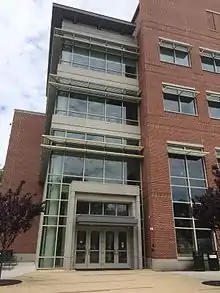
The School of Education has several graduate programs, notably a Doctorate in Philosophy (PhD) in Educational Studies with a Concentration in Cultural Studies from the Educational Leadership and Cultural Foundations Department.
The history of UNCG's School of Education has its roots in the founding of the university itself. Originally designated in 1891 as the North Carolina State Normal and Industrial School, UNCG was established as a school to train women educators, based on the assumption that if women received training they would, in turn, educate their children and ultimately improve the level of education and literacy in the state.
For almost a decade after the Normal was founded, the curriculum involved diplomas awarded for work that was distinctly below college level. At the time, few public high schools turned out female graduates who were prepared to handle college-level work. The Normal School became a full-fledged College in 1897. Baccalaureate degrees followed in 1903 and graduates were awarded a "diploma and life license" to teach in North Carolina.
College of Visual and Performing Arts
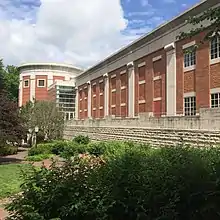
The UNCG College of Visual and Performing Arts is home to over 900 student majors and more than 100 distinguished faculty members. On July 1, 2010, the School of Music was combined administratively with the departments of theater and dance to create the School of Music, Theatre and Dance. In 2016, the Department of Art was transferred from the College of Arts and Sciences, thus giving way to the renaming of the unit. The offices for the new combined school remain in the current music building, with the Art Department remaining at its present location.
School of Nursing
The School of Nursing was established in September 1966 under the leadership of the first dean, Eloise R. Lewis. The first class of BSN students graduated in 1970. In 1976, the MSN program was initiated. The School began the PhD program Fall 2005. The School continues to offer both undergraduate and graduate programs with over 4,000 alumni. The School also offers an outreach program in Hickory, North Carolina for RN to BSN students and a concentration in education for MSN students.
School of Nanoscience and Nanoengineering
The Joint School of Nanoscience & Nanoengineering ("JSNN") is a collaborative project between North Carolina Agricultural & Technical State University and UNCG.
The Joint School for Nanoscience and Nanoengineering is expected to offer Professional Master of Science and PhD degrees in Nanoscience and Nanoengineering. Nanoscience and Nanoengineering training for scientists and engineers already in the workforce.
Programs of study focus on three main areas: nanobioscience, which emphasizes biological and chemical aspects of nanoscience; nanotechnology, which emphasizes engineering and ecological aspects; and environmental nanoscience, which will address ethical and environmental implications of nanoscience. These programs of study lead to Professional Masters or PhD degrees. The biological and chemical research emphasis offered by the JSNN is the first in the nation. The only other two existing professional master's programs in nanoscience and nanoengineering are at Rice University and University at Albany, SUNY, neither of which offers a biological or chemical emphasis.
The Graduate School
The Graduate School at The University of North Carolina at Greensboro directs and manages the graduate programs on campus for approximately 3600 graduate students from 33 states and 34 foreign countries.
Other notable academic units
MFA Writing Program
During the early years, the university had among its faculty a number of noted writers, such as Allen Tate, Caroline Gordon, John Crowe Ransom, Hiram Haydn, Peter Taylor, Robie Macauley and Randall Jarrell. They invited other distinguished writers to campus to read from their work and to meet with students; these writers included Robert Lowell, Robert Frost, Flannery O'Connor, Robert Penn Warren, Eudora Welty, Nobel prize winner Louise Glück and Saul Bellow. In 1965, under the leadership of Robert Watson, creative writing offerings were formalized. Since that time, enrollment has grown, but the faculty has intentionally kept the MFA program small, enabling students to have individual conferences with faculty. Notable faculty members have included Fred Chappell, H.T. Kirby-Smith, Michael Parker, Craig Nova, Stuart Dischell, Jennifer Grotz and David Roderick. Notable graduates include Claudia Emerson, Steve Almond, Keith Lee Morris, Lee Hadaway, Wiley Cash, Linda Carter Brinson, Kelly Cherry, Kathryn Stripling Byer, Mary Ellen Snodgrass, Robert Morgan. and Rodney Jones.
Gateway University Research Park
Gateway University Research Park is a 501(c)3 not-for-profit entity created to manage and operate the joint collaboration between North Carolina A&T State University and UNCG for the purposes of supporting research and economic development within the Triad. Gateway University Research Park aims to attract and retain educational, corporate and community service agencies which advance scientific and educational research in technology. The park consists of two campuses.
Residential colleges
UNCG is home to three residential colleges, as well as an arts-specific dormitory community.
Cornelia Strong College
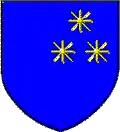
Cornelia Strong College was founded in 1994, and was originally housed in Moore-Strong Hall. It is named for Cornelia Strong (1877–1955), professor of mathematics and astronomy in the university from 1905 to 1948.[48]
Cornelia Strong College provides a social and academic community within the context of the larger university. Strong College has a curriculum focused on sustainability. The college is a two-year program, similar to that of Ashby College. After two years at Strong College students take a fieldwork capstone course to "graduate" from the program. Strong College fellows are faculty members who take an active role in the development of Strong College's student members.
Grogan College
Ione Grogan College, established in 1997 and named after alumna and former professor Ione Grogan, is limited to freshman and serves about 300 students per year. The college is divided into smaller learning communities, each headed by a faculty fellow. The college offers classes that meet general requirements, and ease freshman into the college experience.
Ashby Residential College
The Warren Ashby Residential College at Mary Foust, established in 1970, is a community of freshman and sophomore students, faculty and staff who live or work in Mary Foust Hall. Also known as RC (or ARC), the college offers small classes, close student and faculty interaction and a rich community living experience.
Many Mary Foust alumni continue to support and participate in Ashby Residential College. Many of the staff are alumni.
Studio 91
Studio 91, established in 2018, is a residential community of students pursuing artistic disciplines. Also known as Cone Dormitory, Studio 91 offers seminars, activities, and unique access to arts faculty in a rich community living experience. Studio 91 contains practice rooms, dance studios, and spaces for creating visual art. Cross-disciplinary work is also encouraged.
Notable alumni
- Norman Anderson – CEO of the American Psychological Association (PhD in clinical psychology from UNCG)[49]
- Gerald Austin – NFL referee
- Tyler Barnhardt, American actor
- Ruth Bellamy (1906-1969), American writer
- Chrystelle Trump Bond, American dancer, choreographer, and dance historian
- Linda Carter Brinson, American editor, writer, and journalist
- Carrie Lougee Broughton, American librarian
- Kathryn Stripling Byer (born 1944) – American poet and teacher; North Carolina Poet Laureate 2005–2009
- Andy Cabic – singer-songwriter for the band Vetiver
- Wiley Cash – author
- J. P. Carter – American politician, educator, and military officer
- Chris Chalk – actor in the Fox show Gotham and the movie 12 Years a Slave.
- Paul Chelimo – 2016 Olympic silver medalist at 5000 meters in track and field.
- Kelly Cherry - Poet Laureate of Virginia 2010-2012
- Ashlei Sharpe Chestnut – Actress and writer
- The Darlinettes – vocal group
- James L. Dickey III (born 1996) - basketball player for Hapoel Haifa of the Israeli Basketball Premier League
- Tracy Ducar – professional soccer player
- Claudia Emerson – Pulitzer Prize-winning author
- Sue Ramsey Johnston Ferguson, North Carolina state senator
- Ben Folds - Singer-songwriter, musician, composer, and record producer. Frontman and pianist of the alternative rock band Ben Folds Five.
- Dale Folwell – North Carolina House of Representatives (R), District 74 (2004–present)
- Virginia Foxx – U.S. Representative (R), District 5-NC (2005–present)
- Lee Hall (1934–2017), Painter, writer, educator, and a university president; BFA 1955.[50]
- Daisy Hendley Gold – author, poet, and journalist
- Emily V. Gordon – writer and producer, Academy-Award nominated for her autobiographical film The Big Sick.
- Melanie Greene – dancer and choreographer
- Ione Grogan – academic and educator
- Bertha Harris – Lesbian feminist author
- Emmylou Harris – Grammy-winning Country music/folk singer-songwriter
- Barbara Hervey – Judge of the Texas Court of Criminal Appeals; resides in San Antonio
- Ricky Hickman – professional basketball player in Israel for Maccabi Tel Aviv[51]
- Kyle Hines – basketball player who is one of only six men's players in NCAA history to score 2,000 points, grab 1,000 rebounds, and block 300 shots in a career[52]
- Lauren Holt – actress, comedian, and former cast member of Saturday Night Live
- Beth Leavel – Tony Award-winning Broadway actress
- Hamid Amni – Seven times Asian Kickboxing Champion and World Martial Arts WMC/GAISF Silver medalist [53][54][55][56]
- Carol Mann – LPGA Hall of Fame golfer
- Jaylee Burley Mead – astronomer at Goddard Space Flight Center
- Beth Mitchell – competitive shag dancer
- Nadia Moffett – Miss North Carolina USA 2010
- Keith Lee Morris – author of The Dart League King, The Greyhound God, and The Best Seats in the House
- Alejandro Moreno – retired Venezuelan international soccer player and MLS forward and ESPN soccer analyst
- Robert Morgan – poet, author of Gap Creek, selected by Oprah's Book Club
- Kevin Nanney – professional Super Smash Bros. player (B.A. in Psychology)
- Anne-Claire Niver – singer and songwriter
- Genevieve Oswald – dance archivist at the New York Public Library
- Samwell – internet celebrity made famous by his video "What What (In the Butt)"
- Jessie Rae Scott - First Lady of North Carolina
- Tom Smith – musician, inductee into Jazz Education Hall of Fame
- Mary Peacock Douglas (1903 –1970), American librarian and author
- Mary Ellen Snodgrass – author and two-time New York Public Library award winner
- Emily Spivey – television writer and producer
- Jessamyn Stanley – yoga teacher and body positivity activist
- Justin Tornow – dancer and choreographer
- Celeste Ulrich (1924–2011) (class of 1946) – educator in physical education
- Danny Valencia (born 1984) – American-Israeli major league baseball player
- Kate Wagner - architecture and culture critic
- Curtis Waters - Musician and Songwriter, best known for his 2020 debut single “Stunnin”
References
- "Public NTSE Tables".
- "Office of the Chancellor, UNCG". The University of North Carolina at Greensboro. May 22, 2015. Archived from the original on January 20, 2016. Retrieved May 24, 2015.
- "Provost & Executive Vice Chancellor". UNCG Provost. Retrieved October 20, 2023.
- "College Navigator - University of North Carolina at Greensboro". nces.ed.gov. Retrieved October 21, 2022.
- "UNCG at a glance". UNC Greensboro. Retrieved October 22, 2020.
- "University Communications, 125th – Colors". Retrieved April 8, 2016.
- "Archived copy" (PDF). Archived from the original (PDF) on July 20, 2011. Retrieved June 15, 2010.
{{cite web}}: CS1 maint: archived copy as title (link) - "The University of North Carolina at Greensboro - Timeline of UNCG History". library.uncg.edu. Retrieved December 29, 2021.
- "ShanghaiRanking's Academic Ranking of World Universities". Shanghai Ranking Consultancy. Retrieved September 13, 2022.
- "Forbes America's Top Colleges List 2023". Forbes. Retrieved September 22, 2023.
- "Wall Street Journal/Times Higher Education College Rankings 2022". The Wall Street Journal/Times Higher Education. Retrieved July 26, 2022.
- "2023-2024 Best National Universities". U.S. News & World Report. Retrieved September 22, 2023.
- "2022 National University Rankings". Washington Monthly. Retrieved September 13, 2022.
- "ShanghaiRanking's Academic Ranking of World Universities". Shanghai Ranking Consultancy. Retrieved February 25, 2023.
- "World University Rankings 2024". Times Higher Education. Retrieved September 27, 2023.
- "2022-23 Best Global Universities Rankings". U.S. News & World Report. Retrieved February 25, 2023.
- "University of North Carolina—Greensboro Rankings". U.S. News & World Report. Retrieved October 22, 2020.
- "The Best Colleges in America, Ranked by Value". Money. August 12, 2019.
- "2019 National University Rankings". Washington Monthly. Retrieved September 20, 2019.
- "America's Top Colleges 2019". Forbes. Retrieved September 20, 2019.
- "Collegiate Architecture in Greensboro". Blandwood.org. Archived from the original on October 22, 2012. Retrieved August 24, 2014.
- "UNCG Auditorium". August 4, 2015.
- Marvin A. Brown, Greensboro: An Architectural Record (1995)
- john.newsom@greensboro.com, John Newsom (December 16, 2020). "UNCG's new Nursing and Instructional Building to open next month". Greensboro News and Record. Retrieved April 3, 2021.
- "University of North Carolina at Greensboro | UNCG | The College Board". bigfuture.collegeboard.org. Retrieved March 21, 2021.
- "History Of Basketball At UNCG > The University of North Carolina at Greensboro (UNCG)". library.uncg.edu. Retrieved February 3, 2023.
- UNCG Student Government Association, "About Us"
- "UNCG 2006–07 UGB: The University Community". Uncg.edu. March 15, 2007. Retrieved August 24, 2014.
- "Campus Organizations". www.lp.org. Retrieved October 21, 2022.
- Club Sportscampusrec.uncg.edu/clubs/. "Current Clubs – UNC Greensboro Campus Recreation". Campusrec.uncg.edu. Retrieved April 8, 2016.
- "UNCG Posting Policy" (PDF). Archived from the original (PDF) on September 2, 2006. Retrieved December 28, 2006.
- "UNCG Traditions". UNC Greensboro. Retrieved April 15, 2020.
- Bedrosian, Alyssa (October 17, 2016). "Dean Kiss brings new vision, excitement to College of Arts & Sciences". UNCGNews. Retrieved October 26, 2020.
- Trelease, Allen (2004). Making North Carolina: The University of North Carolina at Greensboro, from Normal School to Metropolitan University. Durham, NC: Carolina Academic Press. p. 23. ISBN 0890895236.
- Lawrimore, Erin (November 6, 2015). "Department of English". Encyclopedia of UNCG History. Retrieved April 26, 2021.
- Trelease, Allen (2004). Making North Carolina Literate: The University of North Carolina at Greensboro, from Normal School to Metropolitan University. Durham, NC: Carolina Academic Press. p. 431. ISBN 0890895236.
- "Academic Assistance". Division of Student Success. Retrieved April 26, 2021.
- "What We Do | The Writing Center". writingcenter.uncg.edu. Retrieved April 26, 2021.
- "2021 Best Colleges for General English Literature in North Carolina".
- "University of North Carolina--Greensboro". www.usnews.com.
- McDowell, Ian (February 2018). "'Ugliest classroom building in America' scheduled for demolition". YES! Weekly. Retrieved April 26, 2021.
- "Brooks Pierce Partner Spoke at UNCG English Department Commencement Ceremony | Brooks Pierce". brookspierce.com. Retrieved April 26, 2021.
- john.newsom@greensboro.com, John Newsom | (December 9, 2020). "The Syllabus: UNCG's connection to a new Nobel laureate". Greensboro News and Record. Retrieved April 26, 2021.
- Johnston, Matthew (December 7, 2020). "Yes, Nobel laureate Louise Glück was a Spartan | UNCG Magazine". Retrieved April 26, 2021.
- "Rankings, Reputation, & Accreditation – The Bryan School of Business and Economics at UNCG". Bae.uncg.edu. Retrieved April 8, 2016.
- "Rankings, Reputation, & Accreditation". Bryan School of Business and Economics at UNCG. Retrieved April 19, 2017.
- "Office of the Dean". Bryan School of Business and Economics at UNCG. Retrieved April 19, 2017.
- Bowles, Elizabeth Ann (1967). A Good Beginning: The First Four Decades of the University of North Carolina at Greensboro.
- "Home Page". ure.uncg.edu. Archived from the original on June 5, 2013.
- Grimes, William (May 17, 2017). "Lee Hall, Artist and de Kooning Biographer, Dies at 82". The New York Times. ISSN 0362-4331. Retrieved April 4, 2022.
- "RICKY HICKMAN basketball profile". eurobasket.com. Retrieved December 17, 2009.
- UNCG Spartans Athletics website. "Hines has career records at UNCG with 2,187 points, 1,047 rebounds and 349 blocks. He is one of 97 players in college basketball history to record 2,000 career points and 1,000 career rebounds and one of just six to also have 300 career blocks joining Alonzo Mourning, David Robinson, Tim Duncan, Pervis Ellison and Derrick Coleman." Accessed March 14, 2008.
- "세계무예마스터십위원회 > 마스터 십 > 무예 > WMC/GAISF 종목". www.masterships.sport. Retrieved November 26, 2022.
- "Adidas". www.adidaskickboxing.com. Retrieved November 23, 2022.
- Kickboxing at the 2017 Asian Indoor and Martial Arts Games
- "The World Games qualifications for 2017, Wrocław (POL) | IWGA". www.theworldgames.org. Retrieved November 26, 2022.
External links
![]() Media related to University of North Carolina at Greensboro at Wikimedia Commons
Media related to University of North Carolina at Greensboro at Wikimedia Commons



